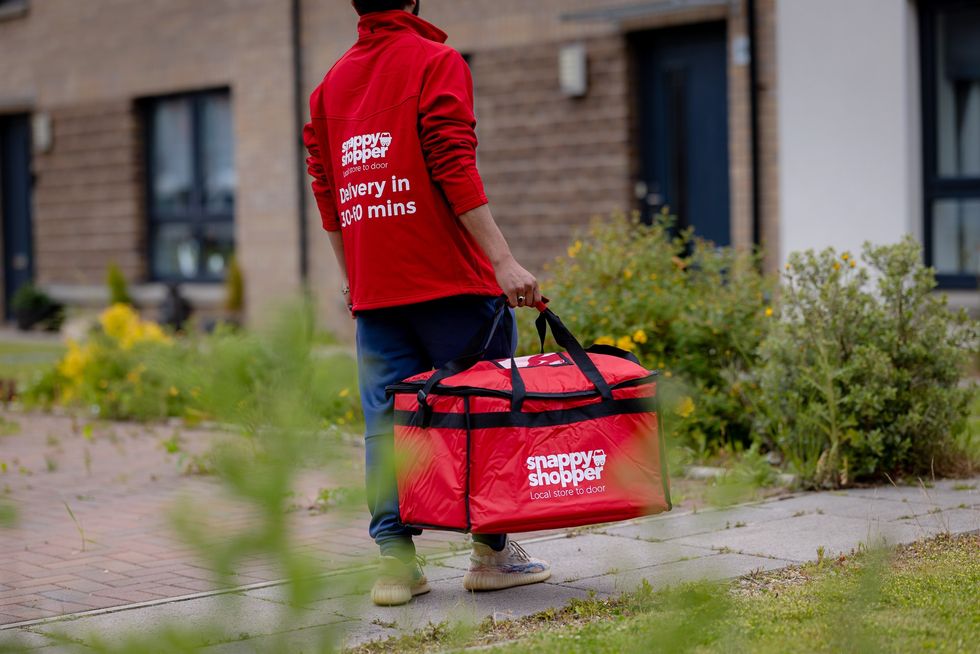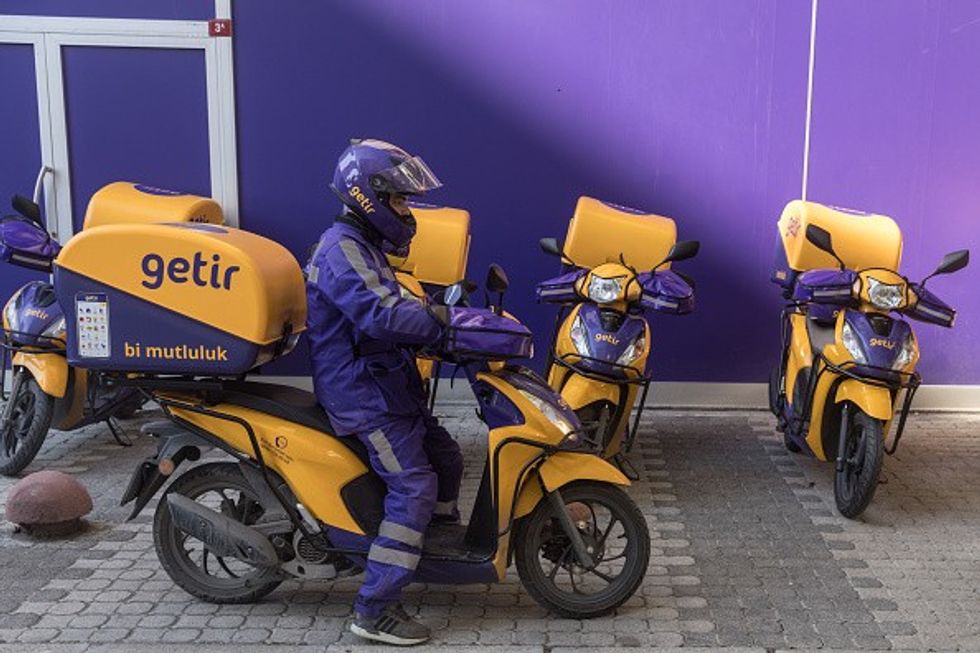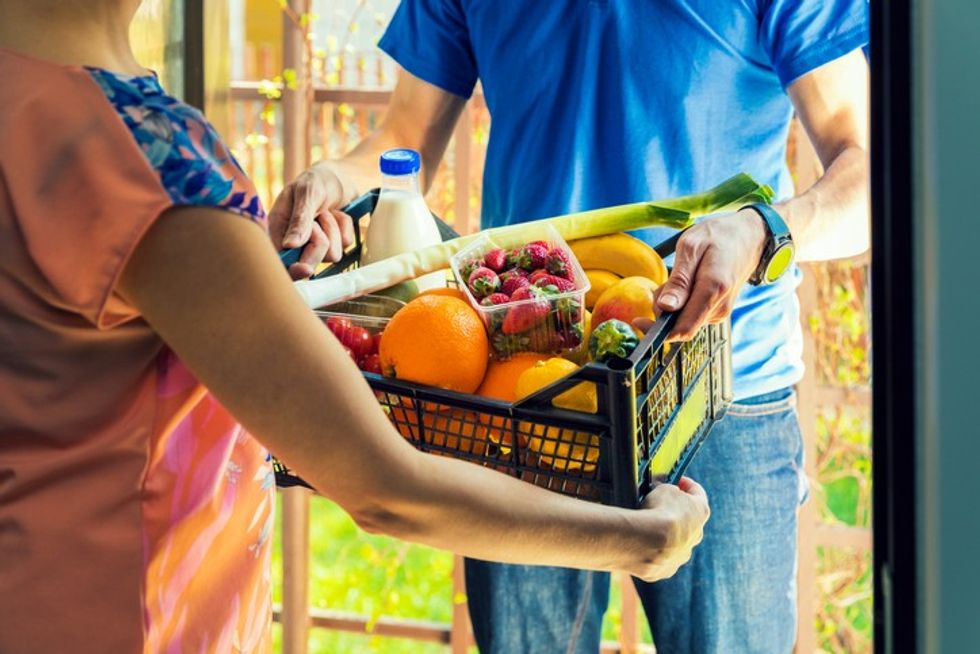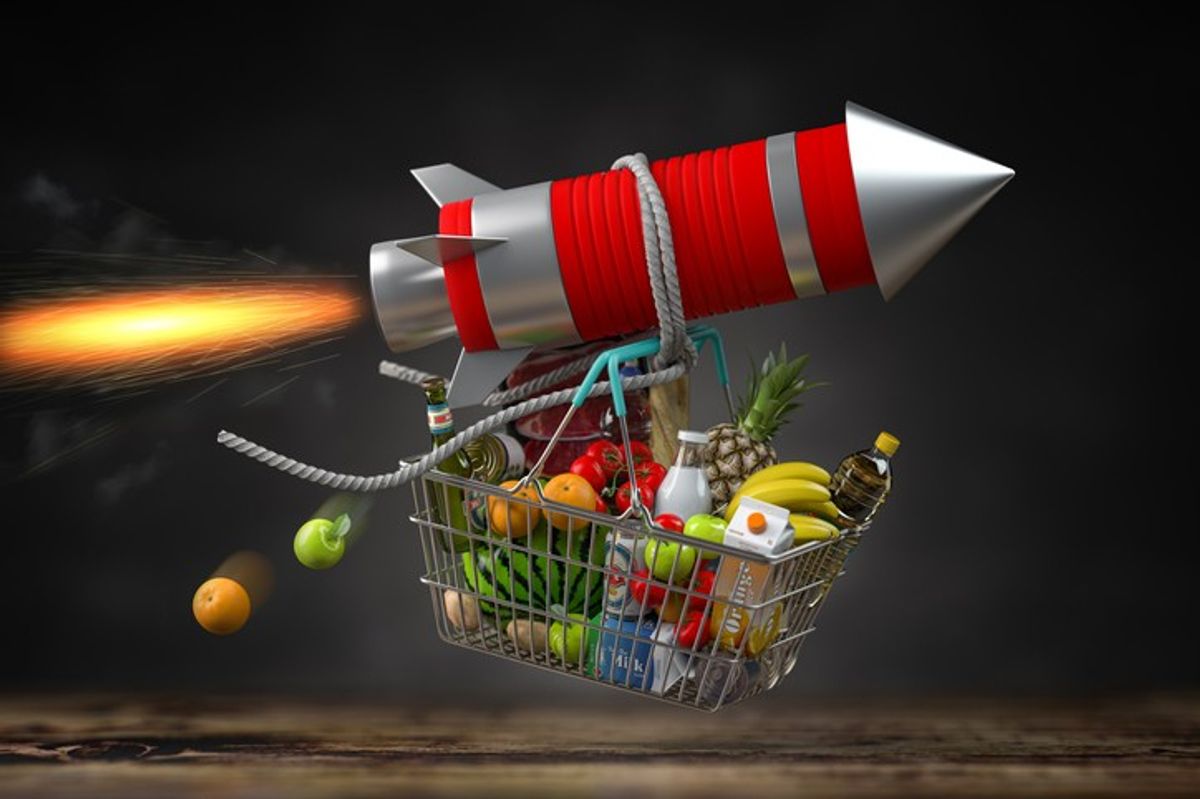As Britons resumed post-pandemic normal living while reducing their spending amid sky-high inflation rates, rapid grocery deliveries have taken a backseat, suggesting that its popularity may have already peaked.
In February 2021, online purchases from food stores in the UK were at an all-time high, touching 15.4 percent as the country reeled under the pandemic and lockdown. The then shift in consumer behaviour even drove the big four grocers in the UK – Tesco, Sainsbury, Morrisons and Asda – to invest in internet deliveries simply to retain trade.
Cut to the present times and the trend seemingly has slowed down quite a bit. Due to the combined effect of country resuming “back-to-normal" buying habits as well as 40-year-high inflation levels, footfall has once again picked up in stores, resulting in slowdown in online shopping.
In the words of Kantar’s head of retail and consumer insight Fraser McKevitt, July was the month when shoppers made the most trips to stores since March 2020.
“This is understandably impacting the online grocery market, and its total share has dropped to 11.8 percent,” he said, adding that this is the first time online’s share has dipped below 12 percent since the early days of the pandemic in May 2020.
Even so, 19 percent of the UK population still made an online order during the past four weeks, equivalent to 5.4 million households- still a fair share to account for.
Not only rapid delivery apps, convenience stores across the country that also offer home delivery service too are seeing a drop in online orders. Retailer Mos Patel, who has been offering home delivery service through his two stores in Greater Manchester (Premier Heyside in Oldham and Family Shopper in Ashton-Under-Lyne) using a fleet of electric vehicles, resonates the similar feedback.
“We are noticing a major drop in sales on delivery orders. People are budgeting what they need. So, budgeting is the key here and it’s not even October yet,” he said.
“In terms of prices, our shop prices and the retail prices are the same. Our customers know that they are not paying extra for placing orders online. Still, many prefer to now walk into the store and check and compare prices before putting them in the basket. They have become savvy shoppers,” Patel told Asian Trader.
Industry players, however, seem to disagree with the market figures and the claims of slowdown in home deliveries.

Dael Links, Head of B2B Marketing at Snappy Shopper, claims that c-stores have not experienced any slowdown in recent months. Scottish tech company Snappy Shopper’s home delivery app offers delivery service on behalf of convenience stores, working with independent and franchised stores in cities and in rural areas, from the north of Scotland to southern England and Wales.
“Demand is growing for the service on both sides of the marketplace, retailers who want to join and customers who want to order a home delivery,” Links told Asian Trader.
“We are doing record breaking order numbers month on month for every month so far in 2022, hitting the milestone of five million orders to date.”
However, when it comes to rapid grocery delivery services, it is a different story altogether.
Rapid Rise
Pandemic time saw a boom in rapid grocery delivery services. Apart from popular names like Gorillas and Getir, many more sprouted such as GoPuff, Jiffy, Zapp, Dija and Weezy. They all operate from local “dark” stores (distribution centres for online shopping) offering limited range of groceries but in a very short span of time ranging from ten minutes to under an hour.
The initial objective was to cater to impulse buyers with small, spur-of-the-moment deliveries such as eggs or beer, delivered by fleets of cyclists, electric scooters or motorbike riders. The model was hugely successful to begin with, as it filled a gap by providing consumers with fast alternatives solutions when the other options were masking up and heading to their closest grocery store or battling with Big 4 grocers to claim a delivery slot.
However, the market soon became crowded and hyper-competitive. Currently these services are largely funded by venture capital. Like most of the gig economy, it is still early to say whether such services will generate profits in the long run. After the industry stabilized and shoppers returned to their usual grocers post pandemic, the “q-commerce” players are seemingly tackling each other for smaller shares of the market.
A number of others have collapsed in on themselves after struggling to turn a profit. Like, Weezy was bought out by Turkey-based Getir in November 2021, with latter acquiring its 700 staff and four UK fulfilment centres.
Despite the data and figures, industry leaders of rapid delivery continue to have an optimistic outlook.
Kristof Van Beveren, Getir UK General Manager, differs from the popular opinion that online rapid grocery is on a decline.

“We do not believe at all that the demand for the service has peaked,” Beveren told Asian Trader. “It is true that there may be more consolidation in the sector, but there will be a growing demand to meet for the companies that are still operating.”
Getir launched its first five stores in London in January 2021 and now has around 100 stores spread across the UK. It has since started operating in 15 towns and cities including Manchester, Liverpool and Birmingham. It has famously claimed that it is “democratising the right to laziness”.
To attract more app-users, Getir has now announced that it is “rolling back several grocery prices to the 90s” in response to the cost-of-living crisis.
Getir and other ultra-fast delivery apps are now under pressure to show profit to their investors, something that can be done either by charging more or cutting jobs. Charging higher prices will not be taken down with customers who are already dealing with high inflation and the worst squeeze on disposable income.
As the pressure piles up, many rapid delivery platforms are seen pivoting their businesses away from this model following significant cash burn and stagnating sales, while many others have announced major global staff redundancies.
Despite Beveren’s optimistic outlook, it emerged in March that Getir, that employs its own workers, was planning to cut 14 percent of its staff globally due to rising global inflation and costs. It was also reported that the company planned to curtail a lot of its capital-intensive expansion — which will include hiring, marketing investments and promotions.
UK-based delivery platform Deliveroo, that operates in over 200 cities and towns across the UK, working with 50,000 restaurant partners, major grocery partners and employing more than 50,000 self-employed riders, too has been facing tough waters lately and is yet to turn a profit since it was founded in 2013.
The online food delivery platform posted a pre-tax loss of £147.3 million for the first half of 2022 – and is pulling out of the Netherlands. However, its customer base increased by four per cent compared with last year to reach 7.8 million monthly active customers.

Deliveroo too still remains optimistic and is continuing to form partnership with retailers like Co-op and Asda.
“As popularity continues to grow for on-demand grocery, we are continuing to develop our thriving grocery offering by expanding our partnerships with major brands such as Sainsbury’s, Co-op and SPAR - alongside small, local grocers - as well as launching a new partnership with Asda.
“As part of the offering, our Deliveroo HOP service has seen particular growth in popularity, ensuring our customers can receive their groceries within minutes,” a Delivery spokesperson told Asian Trader.
“Deliveroo driven growth through the expansion of major partnerships with household retailers, such as Waitrose, Sainsbury’s, Co-op and SPAR. It has been expanding choice for consumers in the UK and Ireland with close to 7,000 grocery sites with major partners and smaller independent partners to date.”
Future is Omni
UK grocery retail is a huge market and consumers are expected to use multi-channels to fulfill their needs.
“We believe that retail is becoming omnichannel and rapid grocery delivery is here to stay - not as a substitute to traditional grocery shopping, but as an additional offering,” points out Beveren from Getir.
Even in tough times, Beveren continues to be hopeful as he even claims that ordering online is the best way to avoid “over-shopping”.
“This avoids the temptation of visiting a store where you may be tempted to add additional items as you go round the store and also while you wait to pay at the till,” he says, adding that he has every confidence that the sector will go from strength to strength as “we have a proven business model”.
Coming times may prove tricky for rapid grocery apps. Britons will further tighten their purse strings, keeping discretionary expenses at check, including paying considerably extra for quick “within minutes” delivery.

However, availing home delivery service, as long as it on shelf price, is expected to continue though not at a rapid rate.
Multiple consumer habits established over the past two years are set to stay, so offering delivery service brings many benefits to stores, says Links from Snappy Shopper, adding that providing such a service also enables the stores to reach a much larger customer audience.
“People are happy to pay for the convenience of home delivery as long as it is on the shelf price plus a fair delivery or service charge,” Links sa ys, adding that habits established during the pandemic are set to stay with people who are expected to enjoy at-home socialising this winter as the cost-of-living continues to climb.
Links, in fact, adds that there was five percent uplift in customers planning to shop more online this year, in comparison to 2021.
“Online grocery could make up 18 to 30 percent of the food-at-home market by 2030 with rapid delivery having the potential to reach three to seven percent of the total food-at-home market.,” he says.
Links also claims that it is in the best interest for convenience stores to continue offering home delivery.
“Home delivery is an essential part of the future success of convenience stores, enabling them to widen their community network and future-proof their business against the competition,” he concludes.





